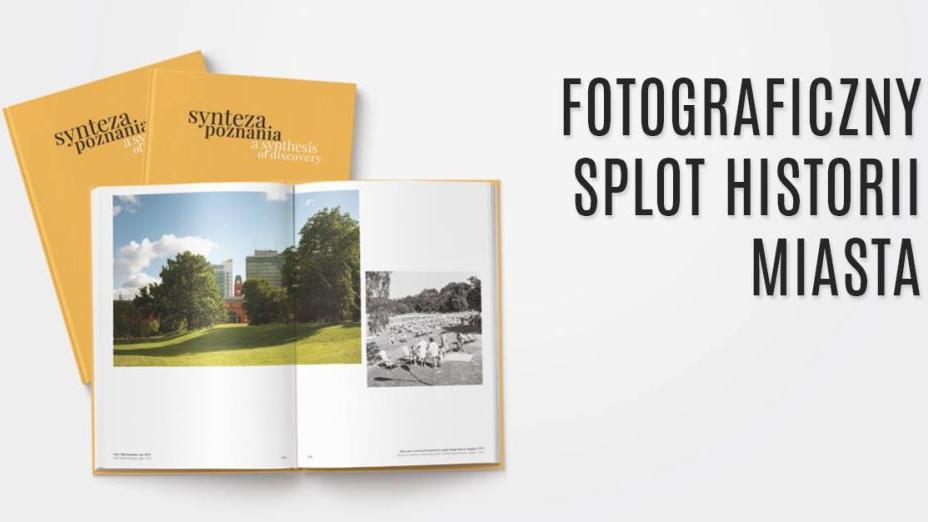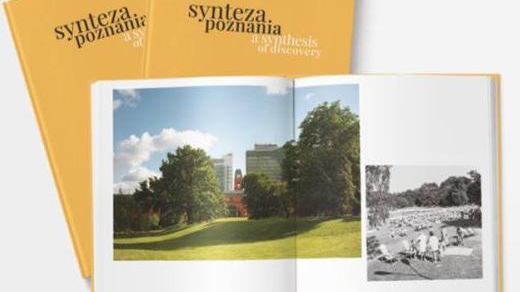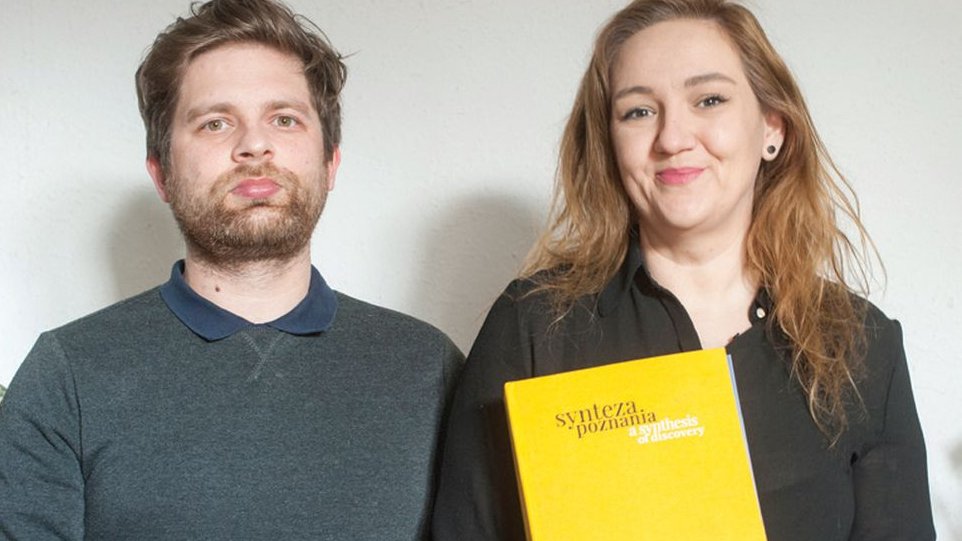The Two Stories

Your book is titled A Synthesis of Discovery. A Photographic Splicing of Poznań's Histories. To pick up on the synthesis in the title, what are the component parts of the publication?
Mateusz Kiszka: Ever since we launched work on the book, we have wanted it to establish a dialogue between the present and the past and have its timelines intertwine and complement each other. The idea was for the book to be viewed as a tale of a city made up of micro-stories born of interactions among individual photos. That synthesis is a blend of archival photos of Poznań made between the late 19th century and the 1980s and of contemporary photos taken between November 2019 and May 2020.
Marta Buczkowska: The book comprises four chapters, each addressing the city and its history from a different perspective. Each chapter begins with a short introduction we wrote together and a photograph of the Old Market Square that thematically fits into the focus of that particular section. The first chapter, named "Home", depicts Poznań by means of images that can easily be noticed "at first glance", with sites that seem to be known to everyone and that we think contribute to Poznań's poetry. Part Two, "Storm", portrays Poznań's darkest hours and the scars left behind by these tribulations. In Part Three, "Echo", we explore the memory of the past as well as hope, revival, change and the transformation of the urban fabric, which resembles the tissues of the living organism that the city is after all. The final part, "Breath", is about everyday life, its small pleasures and daily routines.
When taking contemporary photographs, Mateusz chose not to pursue the most obvious approach to such projects, which is to produce rephotographed equivalents that closely mimic historic images. How then do your present-day photographs interact with the archives and what principle underpins the book's narrative?
M.K.: We chose not to follow any rules or predetermined principles. Some of our new photographs were inspired by archival materials, others provided an impulse to sift through archives to find the right match.
M.B.: We largely relied on our intuitions. Having gone over tens of thousands of archival photos, we were at times amazed at how well we could match archival and contemporary photos. Notably, we never strove to create a then-and-now type of narrative, although some such combinations are included. Rather, we searched for an interesting if not surprising visual juxtaposition of two worlds.
What was it like for you to make present-day photos in technical terms?
M.K.: The process was almost entirely analogue. From the moment I was approached to take the photos, I knew I wanted to do it the old way, on medium-sized negatives. This is because this method suits me best and because I very much care about image vividness, which I could not possibly have achieved digitally. I also care tremendously for picture colours and the Kodak Ektar 100 film, which I used for all the photos, meets my every expectation in this regard.
M.B.: Of course, there was some digital processing as the negatives had to be scanned. But then we made every effort to make the colours of the final image as natural as possible. Mateusz can be quite finicky about that. He also wanted to keep the frame size in the 6x9 ratio. The size of the whole book was adjusted to make sure the spreads looked their best.
How did you approach portraying the city? Were you shooting for objectivity or following a personal vision?
M.K.: With such photos, it is hard to remain objective as the image of the city will always be filtered through your personal experience and follow your well-trodden paths. The way you portray the subject matter and render its character is also strongly influenced by one's style of photography. Before I start taking photos on any project, I try to develop a vision for the look of the photos and the atmosphere and emotions I want to convey. This project was no different. I wanted to show Poznań the way I see and feel it.
When viewing the book, you cannot help noticing a certain disconnect between the archival and contemporary photographs. The old pictures include more people and show a city that teems with life, while in contemporary photos, even if there are people in them, they tend to be quite insignificant, blending into the landscape. Is this effect intentional and a part of your artistic vision or did external factors force your hand to present the city in this manner?
M.K.: It was of course significant that much of my field work took place during the pandemic, which foiled some of my plans as I was unable to show certain scheduled sporting and artistic events. However, this was also a blessing in disguise as I am not particularly fond of having people pop up in my photos unless there is a good reason for them to be there.
M.B.: Recent changes to privacy laws have made it considerably harder to photograph people. To meet the requirements, Mateusz would have to ask every person to fill out a bunch of forms. Having to deal with all these consent forms would ruin the sentimental mood. The law used to be much more liberal in this respect, which is why you may get the impression there is more life in the archival photos, because they show more people.
Neither of you are native Poznanians - it has only been several years since you have come to live and work here. Was the project a way for you to get to know your new city?
M.K.: Poznań is not really all that new to me as many of my close family members have always lived here and I have been visiting Poznań ever since I was a little kid and have always watched it change. I also did my university studies in Poznań. This said, it is only now that I can say that I have settled down here. And indeed, work on the book was a way for me to get to feel at home in this city.
M.B.: Despite having only lived in Poznań for a few years, I feel a close bond with it. This is where I studied and where I now work. Perhaps it is thanks to my job at the Posnania Municipal Publishing House, which publishes books on the city's history, that I feel such a strong connection with Poznań. There is no denying though that work on the book of photographs has helped me discover my new home. We have both learned a great deal and heard many fascinating stories.
Marta Buczkowska
Graduate of photography at the Poznań University of Fine Arts, graphic designer at the Posnania Municipal Publishing House (Wydawnictwo Miejskie Posnania), a fan of both contemporary and decades-old photography.
Mateusz Kiszka
Graduate of the Poznań University of Fine Arts in photography, visual artist, exhibition curator, and photography instructor at the Regional Public Library and Cultural Centre in Poznań. Organiser of photography exhibitions and contests.
A Synthesis of Poznań. A Photographic Splicing of Poznań's Histories, Wydawnictwo Miejskie Posnania
"Some photographs are intended to present an idyllic life, the horrors of war, the fragility of the world's foundation, a rebirth, a catharsis of sorts", say the authors in their introduction to this unique book of photographs about Poznań as they offer to take the viewer on a metaphorical journey through time. The archival and contemporary shots and their captions are intended to bridge the gap between the past and the present in captivating ways. The city they portray is vibrant, fascinating, dynamic and unpredictable.
A bilingual (Polish and English) book of photographs, available in Centrum Informacji Kulturalnej (Cultural Information Centre), ul. Ratajczaka 44, Poznań
translation: Krzysztof Kotkowski
© Wydawnictwo Miejskie Posnania 2021
See more

God Save the Film

Black-and-White Poznań

An Arctic Point of View


